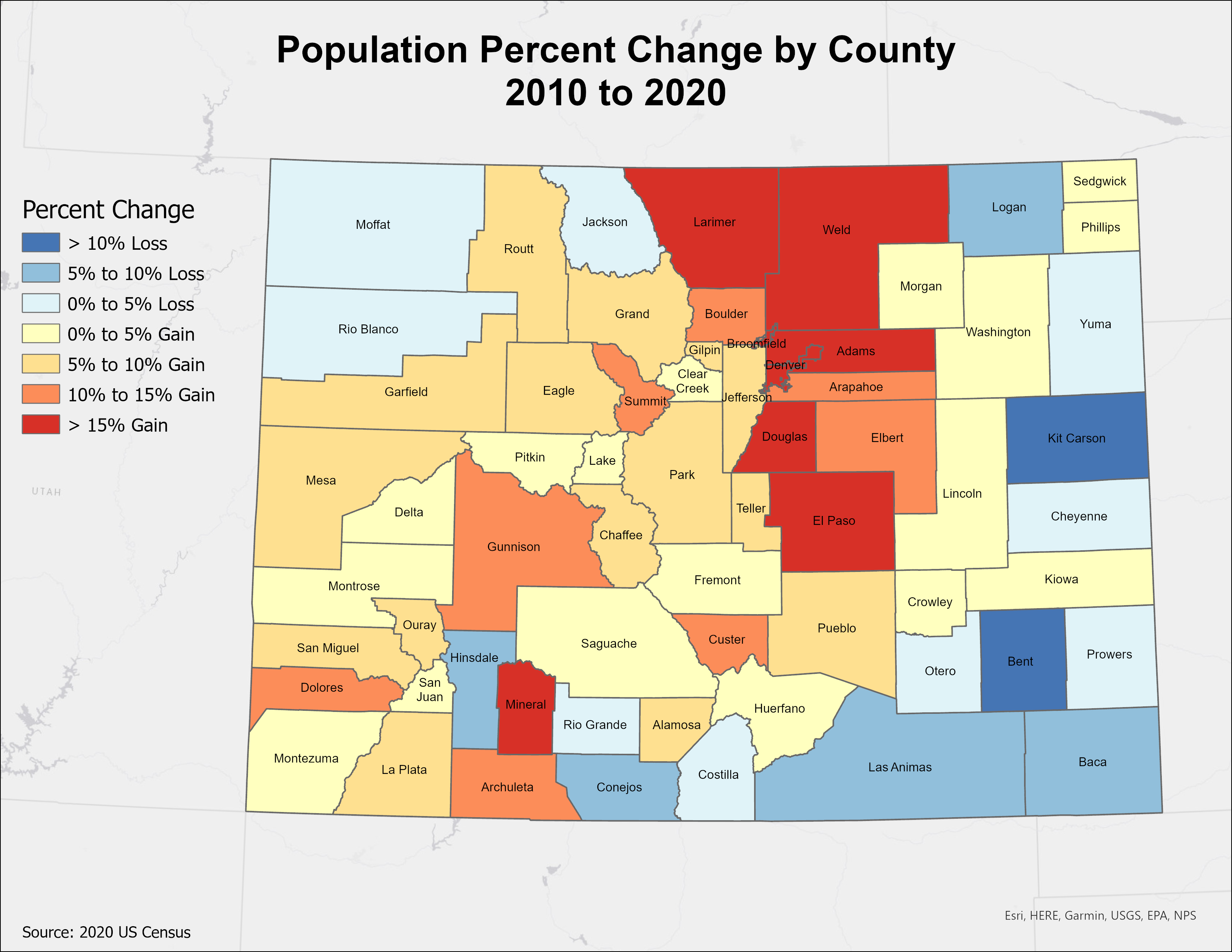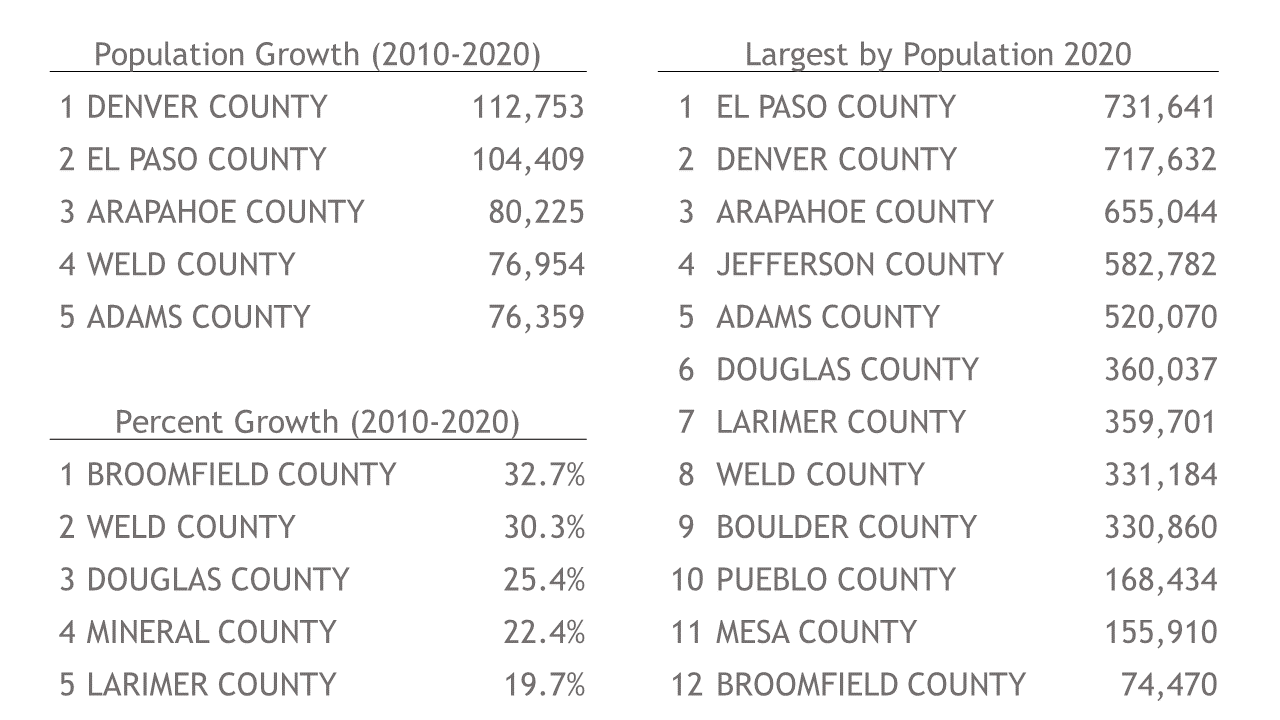
2020 Population results from the U.S. Census
TOTAL POPULATION CHANGE
Census 2020 state level results were released in April 2021. The results showed that Colorado’s resident population as of April 2020 was 5,773,141 ranking it 21st in size in the US. Colorado’s 2020 population represents growth of 744,518 or a 14.8 percent increase over Colorado’s 2010 Census population. Colorado’s 2010‐2020 growth percentage was the sixth‐highest among U.S. states. Utah, Idaho, Texas, North Dakota, and Nevada saw a larger percentage increase in population. The growth rate of 14.8% is slower than the previous two decades and one of the slowest growth rates on record. Although the growth rate was slower this last decade, the total growth was similar to the previous decade of 727,935.
The growth between 2019 and 2020 is estimated to have slowed to 48,000 with net migration slowing to 27,300 and natural increase slowing to 20,600. Births remained flat at 62,800 and deaths increased to 42,000 – over 4,000 higher than the previous year due to COVID‐19.
Births
Births continue to slow in both Colorado and the U.S. even though the population of women of childbearing age is increasing. Changes in births have been driven by declines in births to younger mothers. Average age at first birth in U.S is 27. In 2020, over half of all births in Colorado were to mothers ages 30 and over.
For 2020, births were projected decline during the pandemic ‐ ‐ and they did. The total fertility rate hit an all‐time low in 2020, below 1.5 in Colorado and 1.6 for the US. Replacement levels are 2.1 and the US averaged 2.0 from 1990‐2010, but has been dropping annually since 2010. The slowing in births will have long‐run impacts on K‐12 and higher education, as well as the labor force. The State Demography Office is expecting births to be slightly lower in 2021 and then return to levels observed in 2019. The largest group of Millennials are entering their 30s which is the age when Colorado has experienced increased birth rates.
Deaths
Over time, the number of deaths in Colorado have increased, reflecting an increased number of older adults. COVID‐19 has caused an additional increase in deaths in 2020 and 2021. Life expectancy at birth declined 1.5 years last year as a result of the pandemic, experts are expecting a small increase in 2021, but not quite a return to 2019 life expectancy estimates. Life expectancy had generally increased from 2000 through 2019. Female life expectancy continues to be higher than male, but the increase through 2019 had been slightly higher for males than females. However, life expectancy has declined by almost 2 years for males during the pandemic.
Migration
Net migration to the state has declined during the pandemic continuing a slowing that started in 2015. International migration was down 70% as compared to the average level from 2010‐2018 in both 2019 and 2020. In 2020, domestic migration slowed 35% relative to the average between 2010 and 2019.
CHANGE BY COUNTY 2010 to 2020
From 2010 to 2020, 95% of the population growth was along the Front Range, compared to the previous decade where it was 78%. Denver led the growth over the decade increasing by over 112,000. El Paso is the largest county at 731,641 and Broomfield had the fastest growth rate of 32.7%.

The fastest growing counties (in terms of percent growth) were also along the Front Range except for Mineral, a smaller mountain county, ranked 4th highest growth rate with an increase of 24 people. Although Colorado’s population has increased by 744,000 between 2010‐2020, 16 of the counties observed declines over this period. For comparison, between 2000 and 2010, seventeen counties declined in population.
See the full paper here: 2020 Population results from the U.S. Census
Please contact the SDO team if you have any questions about the population of Colorado.